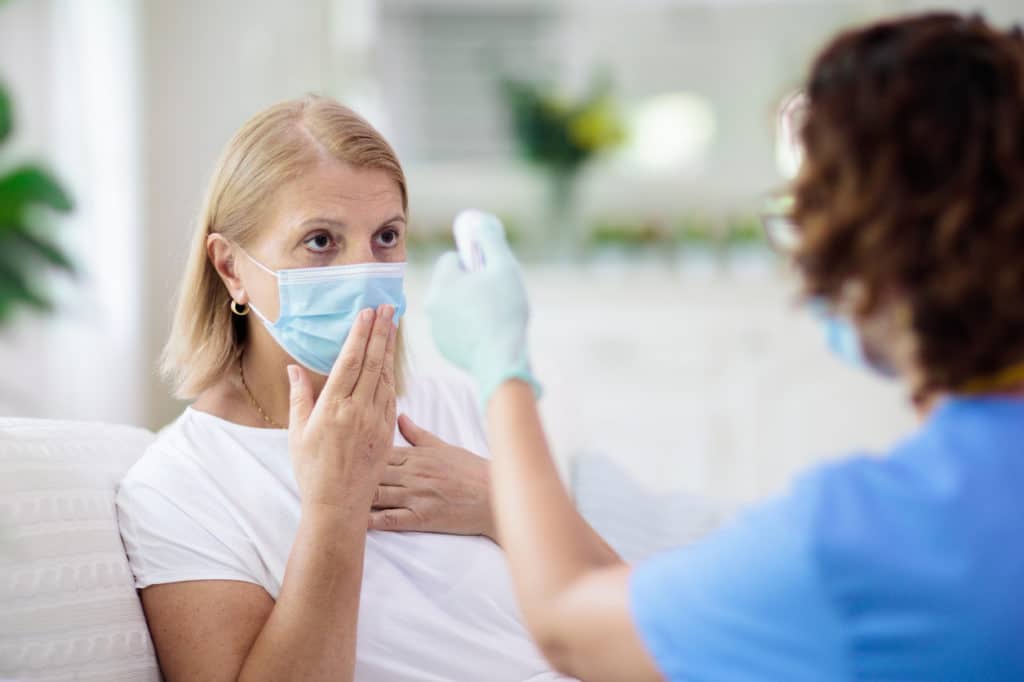
Is coronavirus more deadly than the flu?
Scientists use mortality rates — also called death rates — to describe how deadly a disease is. In order to figure out a death rate for an infectious disease, scientists need to know two things:
- How many people are infected
- How many people who were infected died
Flu death rates differ depending on the flu strain (or type) and the flu season. But in the 2018-2019 flu season, the flu death rate in the U.S. was about 0.1%. That means for every 1000 people who got the flu, 1 died.
Since the COVID-19 pandemic is still in its early stages and, at least in the U.S., many people with symptoms are not being tested, we don’t have an accurate picture of how many people are really infected. That means we don’t yet know the true death rate. Based on the reports we do have, the numbers are showing that the death rate of COVID-19 is much higher than that of the flu.
As of March 19, 2020, the U.S. COVID-19 death rate was hovering between 1.8% and 3.4%. That means for every 100 people who have gotten COVID-19, about 1 to 4 have died. According to WHO data as of March 3, 2020, the worldwide death rate is 3.4%. The death rate would be lower if we knew that more people were getting infected and not dying from it.
Can you get the flu and coronavirus together?
It is possible to get coronavirus even if you’ve had the flu. In fact, one patient tested positive for flu and coronavirus at the same time.
Why are we practicing “social distancing” for the coronavirus if we don’t do it for the flu?
Social distancing is a way to control the spread of infections by limiting your contact with other people.
Since SARS-CoV-2 is a novel (new) type of coronavirus in humans, none of our immune systems are ready to fight it (i.e., we have no natural immunity against it). Plus, there’s no vaccine for it. This means that many people who come in contact with the virus will get sick from it. This is different from the flu because the chances of getting sick are lower: Many people have been exposed to different flu strains, and we have a flu vaccine that offers protection against it.
Social distancing is important for slowing down the spread of SARS-CoV-2. Even if we can’t completely stop the spread of the virus, scientists hope to “flatten the curve.” The idea is that instead of there being tens of thousands of sick people at one time, there are fewer infections over a longer period of time. This helps us make sure the healthcare system is not overwhelmed — that there are enough staff and resources to care for people who are sick with COVID-19 or other illnesses.
Is coronavirus seasonal like the flu?
The flu is a seasonal illness that is most common in the fall and winter, even though you can get sick with it anytime during the year. Flu viruses seem to prefer colder, drier weather.
Scientists are still trying to figure out whether COVID-19 might be seasonal as well. But since we are currently in pandemic conditions where there is little immunity to the virus, it’s not safe to assume that COVID-19 will follow a seasonal pattern. Public health measures like handwashing and social distancing (not temperature and humidity changes) are most likely to help curb the severity of the pandemic.

What should I do if I think I may have coronavirus?
If you are in the U.S. and think you may have coronavirus, there are a few important steps you should take:
- Keep your hands clean and quarantine yourself so that you don’t come into contact with anyone else, even people in your household.
- Call your doctor or local board of health. Do not go into your doctor’s office without calling first. They need to be able to protect themselves and other patients from possibly being exposed to the virus. GoodRx is also offering free online screenings to anyone who’s wondering if they should be tested for the virus.
- Avoid going to the hospital or emergency room unless you have severe symptoms like trouble breathing, confusion, feeling like you may pass out, or very high or low body temperature. If you do need to go to the emergency room, still try to call ahead for the same reasons as stated above.
If your symptoms are mild, you may be instructed to self-quarantine for 14 days. While self-quarantining, take these precautions:
- Wash your hands with soap and water often and for at least 20 seconds.
- Do not leave your home. If you do need to leave to visit the doctor, wear a facemask.
- Isolate yourself in a separate room from any other people or animals in your home.
- Avoid sharing personal items — like dishes, bedding, and towels — with others.
- Use cleaning products to clean surfaces (especially doorknobs, phones, and toilets) every day.
- Talk to your healthcare provider before coming out of isolation.
While we are still in the midst of the pandemic, instructions about what to do if you think you are sick with COVID-19 may continue to change. Visit this CDC website to learn more about how you should proceed if you think you are sick.
This article originally appeared on GoodRx.com

Megan N. Brown
PharmD, RPh
Public health pharmacist with fellowship training in drug information and health communications. Writer for GoodRx.


